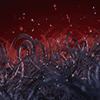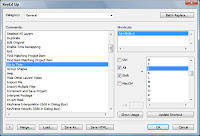 LiveType is not included with FCS3 but word of mouth says that its functions have been made part of Motion 4. Motion 4 will load LiveType projects, which is good for those who invested in the quirky app that others barely touched. While LiveType remains and launches after an FCS3 install, full functionality in the new suite is an unknown.
LiveType is not included with FCS3 but word of mouth says that its functions have been made part of Motion 4. Motion 4 will load LiveType projects, which is good for those who invested in the quirky app that others barely touched. While LiveType remains and launches after an FCS3 install, full functionality in the new suite is an unknown.Apparently LiveType content appears in the Motion Library and the QuickTime component is also still included, so .ipr files in older sequences still work. LiveType features missing from Motion 4 were not confirmed yet in online e-mail lists and forums, or in the comprehensive documentation for the Pro Apps at Apple's Help Library.
Update: Mark Spencer posted some clarification on Cutter-Talk:
'Yes, you can import a LiveType project into Motion 4 - but you could do that in Motion 3, no new news there. Once there, if you want to make changes to it, you need to open it in LiveType. LiveFonts are available in Motion's Library in Motion 4 - just as they were in Motion 3.
Motion has a new text tool, the Adjust Glyph Tool, that allows for the individual manipulation of glyphs, much as you would do in LiveType - thus giving it more of LiveType's functionality, but not, IMHO, "making it's functions part of Motion 4".
Motion does not include any of LiveType's Textures, Objects, or text animation presets - although it does have plenty of its own content.'
On FinalCutPro-L, Philip Hodgetts mentioned that one missing feature is "about changing the color of the font independent of any shadow, ouline or glow. In Motion they change together, in LT they change independently."































